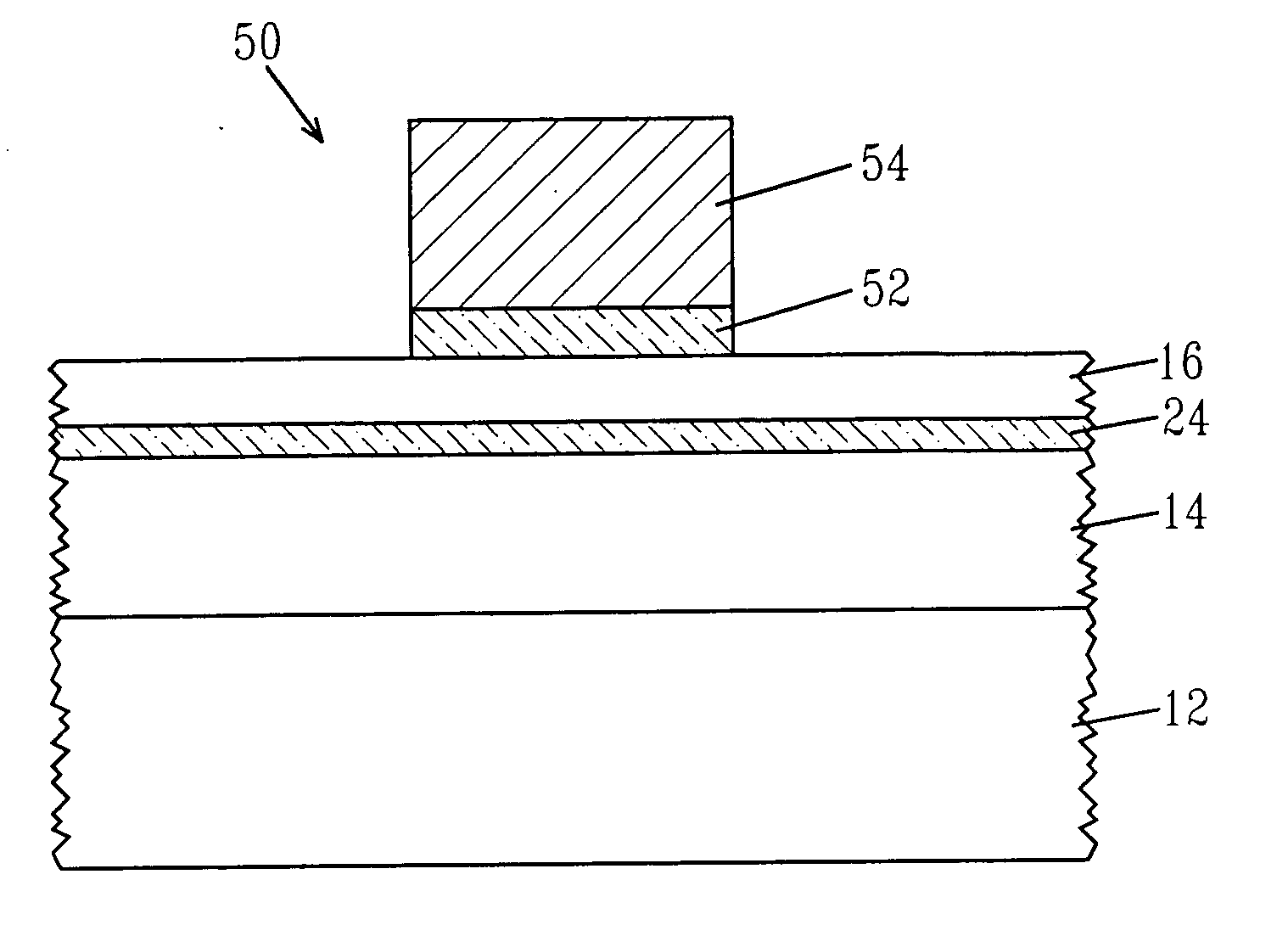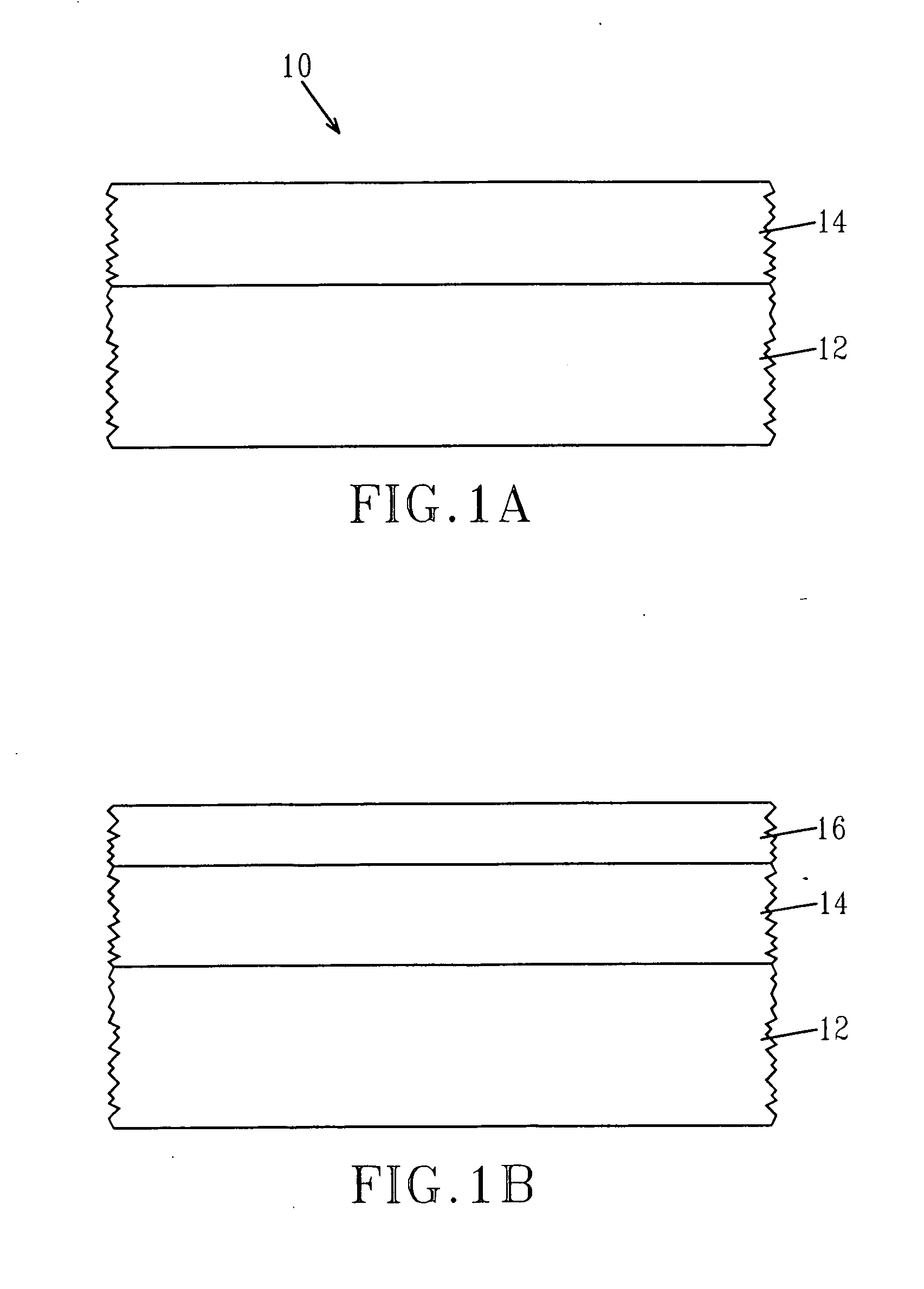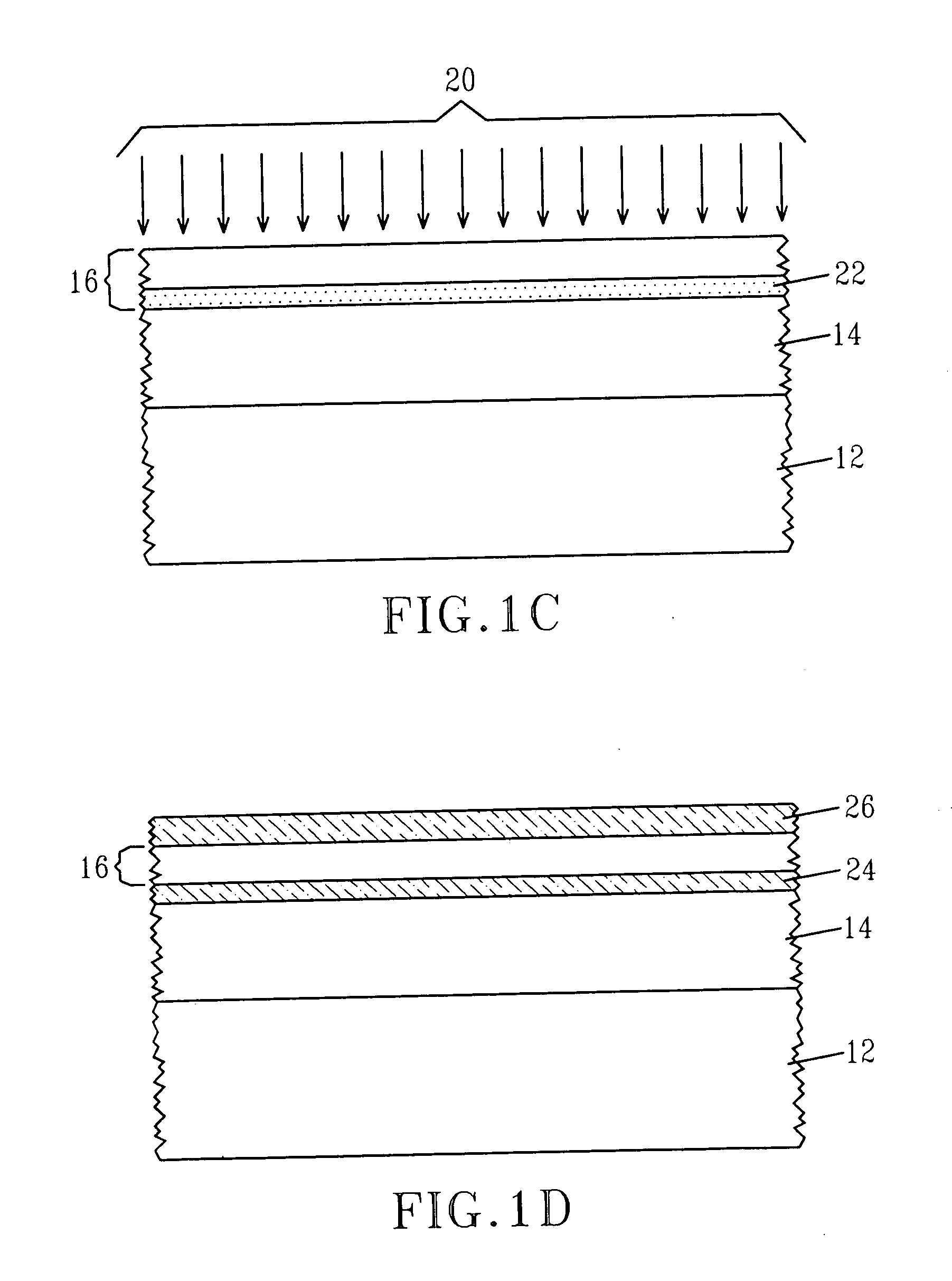Strained semiconductor-on-insulator (sSOI) by a simox method
a technology of strained semiconductors and on-insulators, applied in the direction of basic electric elements, electrical apparatus, semiconductor devices, etc., can solve the problems of reducing the manufacturability of substrates, reducing and affecting the quality of ssoi materials, so as to avoid wafer bonding and amorphization, and reduce the manufacturing cost of ssoi materials.
- Summary
- Abstract
- Description
- Claims
- Application Information
AI Technical Summary
Benefits of technology
Problems solved by technology
Method used
Image
Examples
Embodiment Construction
[0036] The present invention, which provides methods of fabricating strained semiconductor-on-insulator (sSOI) materials and the sSOI materials produced by the methods, will now be described in greater detail by referring to the drawings that accompany the present application. The drawings are provided for illustrative purposes only and, as such, they are not drawn to scale. In the drawings, like and corresponding elements are referred to by like reference numerals. It should be noted that throughout the present application the terms “layers” and “regions” can be interchangeable used.
[0037] As indicated above, the present invention provides a method of fabricating a tensile strained SOI material and a method of fabricating a compressive strained SOI material utilizing a single semiconductor wafer and a SIMOX process.
[0038] Reference is first made to FIGS. 1A-1E which are cross sectional views depicting the tensile strained SOI material of the present invention through various proc...
PUM
 Login to View More
Login to View More Abstract
Description
Claims
Application Information
 Login to View More
Login to View More - R&D
- Intellectual Property
- Life Sciences
- Materials
- Tech Scout
- Unparalleled Data Quality
- Higher Quality Content
- 60% Fewer Hallucinations
Browse by: Latest US Patents, China's latest patents, Technical Efficacy Thesaurus, Application Domain, Technology Topic, Popular Technical Reports.
© 2025 PatSnap. All rights reserved.Legal|Privacy policy|Modern Slavery Act Transparency Statement|Sitemap|About US| Contact US: help@patsnap.com



